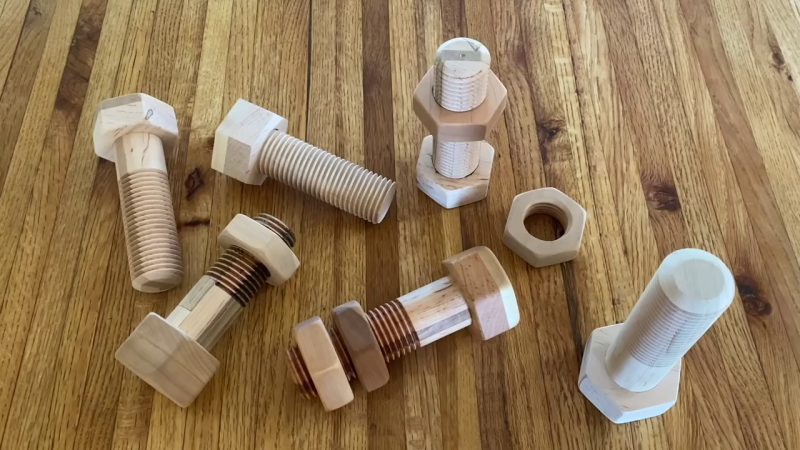[Rudi Schoenmackers] has devised a clever set of custom 3D-printed jigs that makes it easy to build your own wooden hex nuts and bolts. Well, easy if you have access to a woodworking shop with a router, bandsaw and belt sander.
You won’t be using these to mount your PCBs, however. They are pretty big — UNC 1½-6 threads (the closest metric thread would probably be M36-4). [Rudi] points out that these jigs can be readily adapted to generate different sizes and pitches of threads, even left-handed ones, but we suspect making a #4-40 or M3-0.5 is out of the question. There are commercial jigs for making threads, but as [Rudi] points out, those are quite expensive. The price of [Rudi]’s jigs is quite low, assuming you have a 3D printer.
We’re not sure how to best take advantage of these nuts and bolts in ordinary hacking projects, but [Rudi] enjoys giving them away as cool toys or making large clamps and vises out of them. Let us know if you have any applications where wooden threaded fasteners could come in handy. If wooden threads interest you, then check out this project we covered a few years ago on making simple taps.















The router with the 60 degree double angle cutter seems to have the cutter axis parallel to the threaded nut’s longitudinal axis, rather than inclined at the pitch of the thread.
Presumably, for a small enough cutter diameter vs the internal thread diameter, the resulting thread profile will be close enough to 60 degrees to not matter.
Thanks, that hasn’t been a problem at all for the 1-1/2 – 6 TPI threads I have made. It would be very easy to redesign the ‘thread box’ with the proper angle build in. Thanks for the suggestion.
This is how threadmilling is done in industry all the time. You just start with a helical lead in and lead out move. the angle mismatch to the helix angle doesn’t matter as much as you think.
He used a threadmill tho in a router, and since he didn’t have cnc, he made a jig that cleverly copy milled the threads into the material.
Pretty ingenious actually.
Thanks! I like to build various jigs for my wood working shop! My 3d-printer has been very useful for that.
Kudos
Thanks!
Threaded fiberglass rod is used in industry with fiberglass nuts for high voltage uses, I know because a former employer used to thread grind the stuff where I worked. Very messy!
I never intended to make ‘insulating’ nuts/bolts; just toys, decorative wood pieces, or threads for clamps and vises. I don’t think I would use wooden bolts/nuts in electrical work. I suppose you could use the technique with fiberglass, acrylic, etc; but then again you should probably use a lathe/mill or CNC machine,
(Waiting for the stembolts joke)
Well, these are not self-sealing; I’m still working on a jig for that!
With bolts like that you can make a trash bag commercial. https://youtu.be/wH3waHsrL74
One person’s treasure is another person’s trash ;-) I’m GLAD you pointed this out!